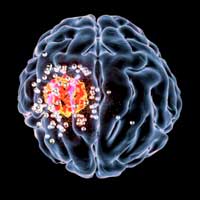 Scientists describe a small carbon nanoparticle engineered by the two labs that could both deliver chemotherapy drugs across the blood-brain barrier and mark tumor cells with fluorescence in mice. What's more, this nanoparticle is incredibly simple - made up of only one single compound.
Scientists describe a small carbon nanoparticle engineered by the two labs that could both deliver chemotherapy drugs across the blood-brain barrier and mark tumor cells with fluorescence in mice. What's more, this nanoparticle is incredibly simple - made up of only one single compound.
Wednesday, April 8, 2020
Nanoparticles offer large potential for brain cancer treatment
 Scientists describe a small carbon nanoparticle engineered by the two labs that could both deliver chemotherapy drugs across the blood-brain barrier and mark tumor cells with fluorescence in mice. What's more, this nanoparticle is incredibly simple - made up of only one single compound.
Scientists describe a small carbon nanoparticle engineered by the two labs that could both deliver chemotherapy drugs across the blood-brain barrier and mark tumor cells with fluorescence in mice. What's more, this nanoparticle is incredibly simple - made up of only one single compound.
Researchers present revolutionary light-emitting silicon
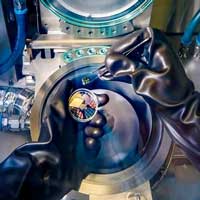 Researchers have developed an alloy with silicon that can emit light.
Researchers have developed an alloy with silicon that can emit light.
New 'refrigerator' super-cools molecules to nanokelvin temperatures
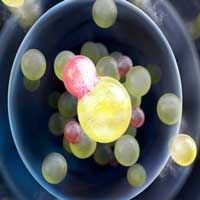 Technique may enable molecule-based quantum computing.
Technique may enable molecule-based quantum computing.
Nanodiagnostics for early stage disease detection
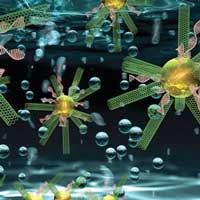 Researchers used nanotechnology in biomedical diagnostics - a process called nanodiagnostics - to create a new, ultrasensitive DNA biosensor. The new sensor could potentially detect DNA-based biomarkers for early diagnosis of cancer and genetic disorders, as well as monitor patient responses to therapies.
Researchers used nanotechnology in biomedical diagnostics - a process called nanodiagnostics - to create a new, ultrasensitive DNA biosensor. The new sensor could potentially detect DNA-based biomarkers for early diagnosis of cancer and genetic disorders, as well as monitor patient responses to therapies.
Harnessing the power of electricity-producing bacteria for programmable biohybrids
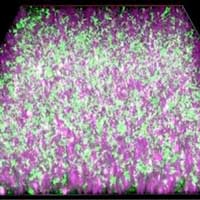 Researchers have developed a material that enabled them to create a programmable biohybrid system that conducts electrons from electricity-producing (exoelectrogenic) bacteria.
Researchers have developed a material that enabled them to create a programmable biohybrid system that conducts electrons from electricity-producing (exoelectrogenic) bacteria.
A step ahead in the race toward ultrafast imaging of single nanoclusters
 Using a combination of experimental and computational data, researchers discover paths to optimize pulses from highly intense X-ray beams.
Using a combination of experimental and computational data, researchers discover paths to optimize pulses from highly intense X-ray beams.
Tracking the atomic pathways by in-situ liquid cell TEM
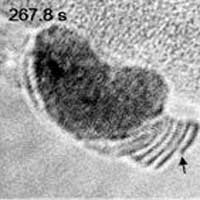 Technical advantages of in-situ liquid electron microscopy allow us to monitor the growth trajectory of pure metal nanoparticles in liquid media, including nucleation growth, nanorod self-assembly, and electrochemical deposition.
Technical advantages of in-situ liquid electron microscopy allow us to monitor the growth trajectory of pure metal nanoparticles in liquid media, including nucleation growth, nanorod self-assembly, and electrochemical deposition.
Using nano-scale spintronics, researchers aim to build novel artificial brain
 New research project to develop novel AI hardware; a completely new kind of computer system that mimics how the human brain is built. The artificial neural networks can increase computer performance by up to 100,000 times compared to modern supercomputers.
New research project to develop novel AI hardware; a completely new kind of computer system that mimics how the human brain is built. The artificial neural networks can increase computer performance by up to 100,000 times compared to modern supercomputers.
House cleaning on the nanoscale
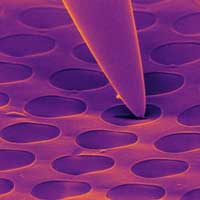 A team of scientists has developed a novel mechanical cleaning method for surfaces on the nanoscale. The technique successfully removes even the tiniest contaminants down to the atomic scale, achieving an unprecedented level of cleanliness.
A team of scientists has developed a novel mechanical cleaning method for surfaces on the nanoscale. The technique successfully removes even the tiniest contaminants down to the atomic scale, achieving an unprecedented level of cleanliness.
Producing iron oxide nanoparticles for 150,000 COVID-19 tests per week
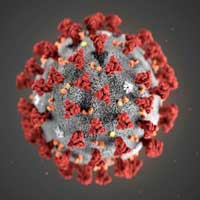 Iron oxide nanoparticles coated with silica may seem like an unlikely player in enabling Norway to fight the coronavirus outbreak.
Iron oxide nanoparticles coated with silica may seem like an unlikely player in enabling Norway to fight the coronavirus outbreak.
Engineers use metal-oxide nanomaterials deposited on cloth to wipe out microbes
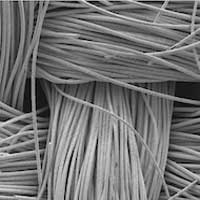 Nnomaterials are rough on microbes such as bacteria. They actually puncture the cell walls of the single-cell microbes, causing leaks and ultimately death. Put that on a cloth and you could have an effective, chemical-free disinfecting wipe.
Nnomaterials are rough on microbes such as bacteria. They actually puncture the cell walls of the single-cell microbes, causing leaks and ultimately death. Put that on a cloth and you could have an effective, chemical-free disinfecting wipe.
Subscribe to:
Comments (Atom)
